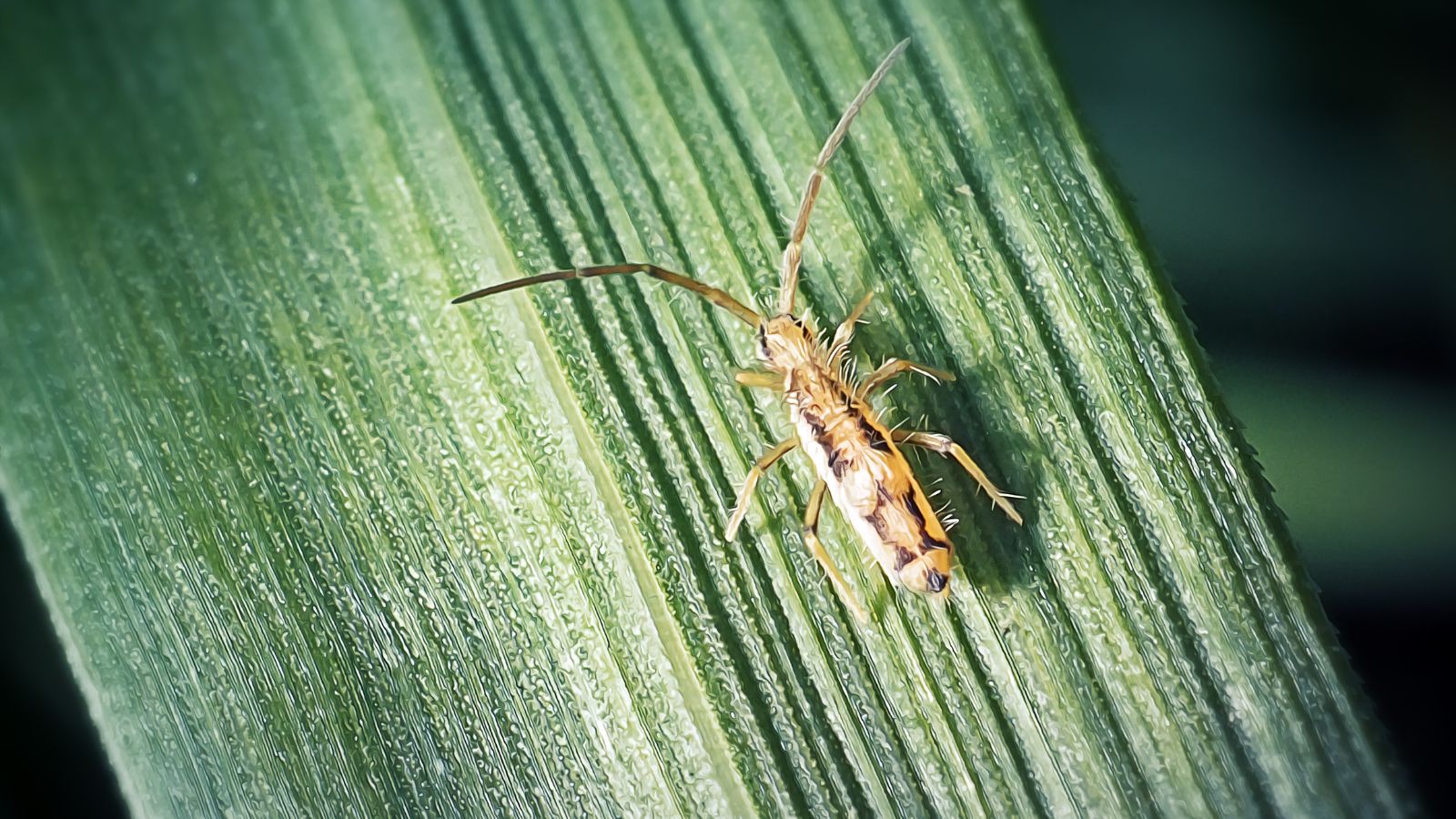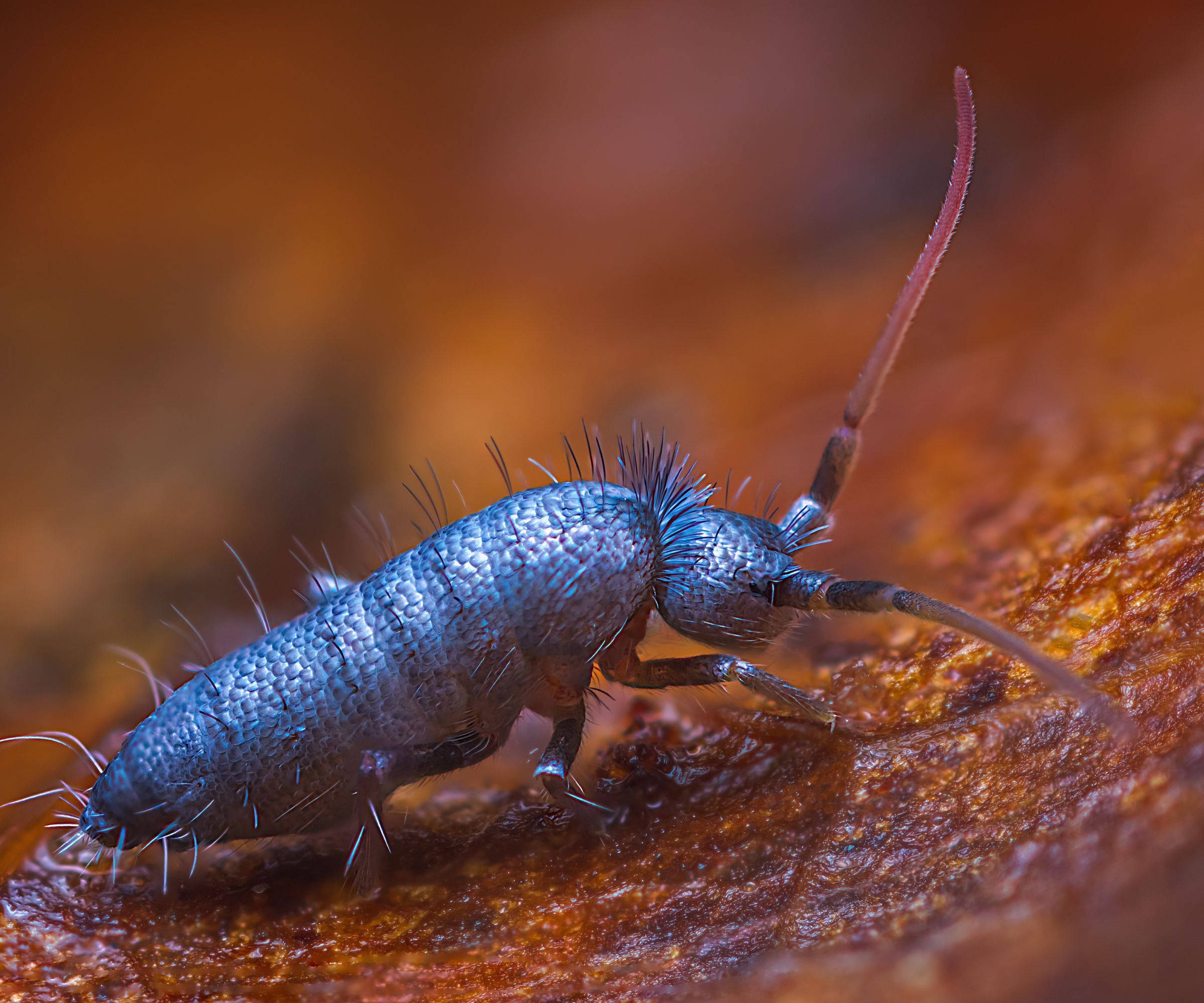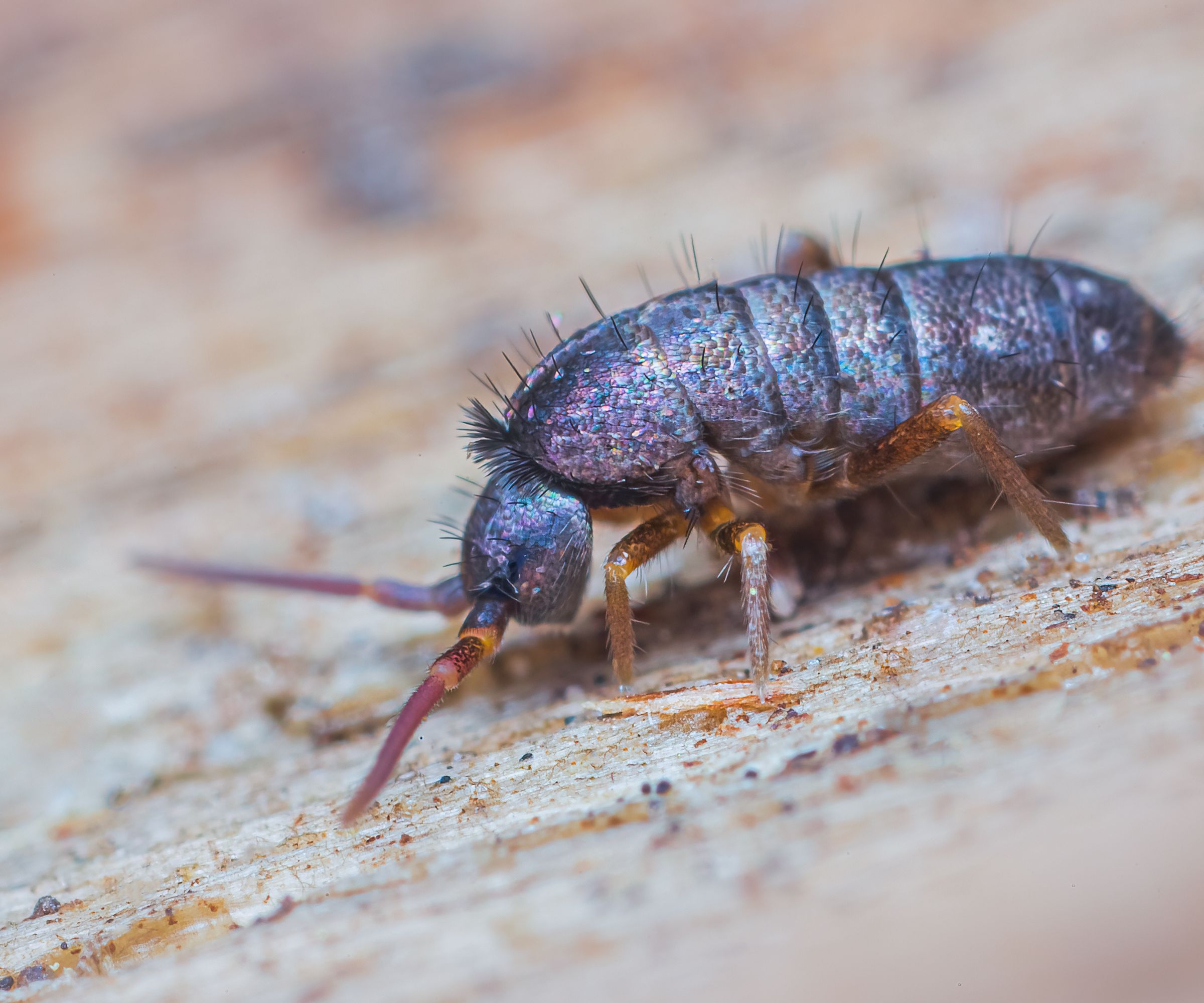
Springtail bugs are some of the most irritating bugs to try and get rid of as they jump and dash when we try to catch them. So how do you get rid of them in your house?
Attracted by moisture, these bugs usually make their homes in our damp garden soil, but can be encouraged inside by protected damp spots if their outside conditions become too dry, particularly in the summer. As a result, dealing with an infestation can feel an awful lot like getting rid of silverfish.
Here, pest control experts explain how to get rid of springtail bugs in your house, and how to keep them away.
How to get rid of springtail bugs in your house
Springtail bugs are tiny, often measuring just one to two milimeters in length, and they come in a variety of colors, from white and gray to blue and purple,’ explains Ryan Farley, CEO of LawnStarter. ‘While they prefer to lie in damp soils in your yard, they will go anywhere there is water. One common sign of their presence is spotting these small bugs in damp areas of your home, such as bathrooms, kitchens, or basements. They are attracted to moisture and often appear when there's a humidity issue, a leak, an overwatered plant, or water damage in your house.
Although they are not damaging, they should be cleared away as soon as possible,’ he adds.

1. Dry out your houseplant soil
The most important step to getting rid of springtails is to treat your houseplants and get rid of any houseplant pests. These bugs thrive in damp soil, so relocating your houseplants to areas with better ventilation and sunlight can help to dry out the soil and make the conditions unfavorable to these tiny bugs, explains Vincent Luca, VP of On Demand Pest Control. This will also help to quarantine them to prevent them from spreading to the rest of your home.
Along with relocation and drying, you can sprinkle a layer of diatomaceous earth over the top of the soil, to prevent bugs from crawling in, and kill those trying to crawl out, Vincent suggests.
2. Fix any leaks and improve ventilation
When it comes to springtails, you must ‘assert your dominance over moisture by promptly fixing leaks, improving ventilation, and utilizing dehumidifiers in moisture-prone areas,’ advises Logan Cox, assistant general manager, and plumbing expert at John the Plumber, Orleans. This will deprive the pests of their favored breeding grounds causing them to flee, or otherwise die out – especially when coupled with some good cleaning tips to remove larvae and feces.
3. Use borax to kill large infestations
If you notice springtails wandering your home, or congregating in a damp spot, then you can sprinkle borax in the area to poison them, recommends Vincent Luca, pest control expert. ‘Always make sure these areas are cut off from pets and children too,’ he warns, ‘as it will have a similar effect on them.’
Sweep or vacuum the borax up the day after, making sure to collect any bugs with it and repeat the process as needed.
4. Use natural repellents
There are a few natural methods you can use to tackle springtails but one of the most popular is essential oils.
Certain scented oils such as tea tree, eucalyptus, and lavender, can all help to repel springtails, explains David Floyd, pest control expert and founder of The Pest Informer. ‘You can make your own homemade bug spray by simply mixing a few drops and spray around areas you have spotted activity to move them along. This is a great method before a thorough infestation takes hold, and it is important to remember that while these methods may help, a significant infestation may require the touch of a professional to really get a grip on,’ he adds.
How to prevent springtail bugs in your house

The main component of preventing springtails from setting up in your house is to limit your home's moisture. This can be done by not overwatering houseplants, using a dehumidifier to remove moisture from the air, and ensuring that your home's pipework is robust, says Logan Cox, plumbing specialist.
‘A water-tight plumbing system acts as a crucial barrier, ensuring the absence of excess moisture that attracts these pests,’ he explains. ‘Thus, safeguarding against leaking pipes not only preserves the integrity of our plumbing but also aids in the prevention of snow flea nuisances, allowing for a harmonious and hygienic environment.
A buildup of dead plant matter and log piles close to your home's exterior can also encourage these bugs closer to your property, inviting them to venture further inside. Logan suggests moving litter, mulch, compost, and leaves away from your walls can do wonders for keeping them towards the back of your yard instead.
FAQs
Do springtails go away on their own?
Springtail bugs can go away on their own, but it isn't likely if the conditions that drew them in in the first place remain untouched. It is best to take measures to kill off the springtail infestation and repair the poor moisture conditions that have encouraged them to make a home.
Are springtail bugs dangerous?
Springtail bugs themselves are not a danger to humans, pets, or your building, but they are a sign that there is a moisture problem that could be causing damage to your property. They are also unsightly, and can be stressful if they begin to hop around. As a result, it is best to try to get rid of them as soon as you spot signs of an infestation.
Springtail bugs may not be threatening insects to get rid of from your home like getting rid of ants, or getting rid of fleas, but they are a sign of deeper, more sinister problems in your home with regards to moisture. If you have noticed a sudden onslaught of springtails when it may be worth calling a pest control expert and a home inspector to check for signs of hidden damage that could cause you a bigger headache than a bug if left unchecked.







